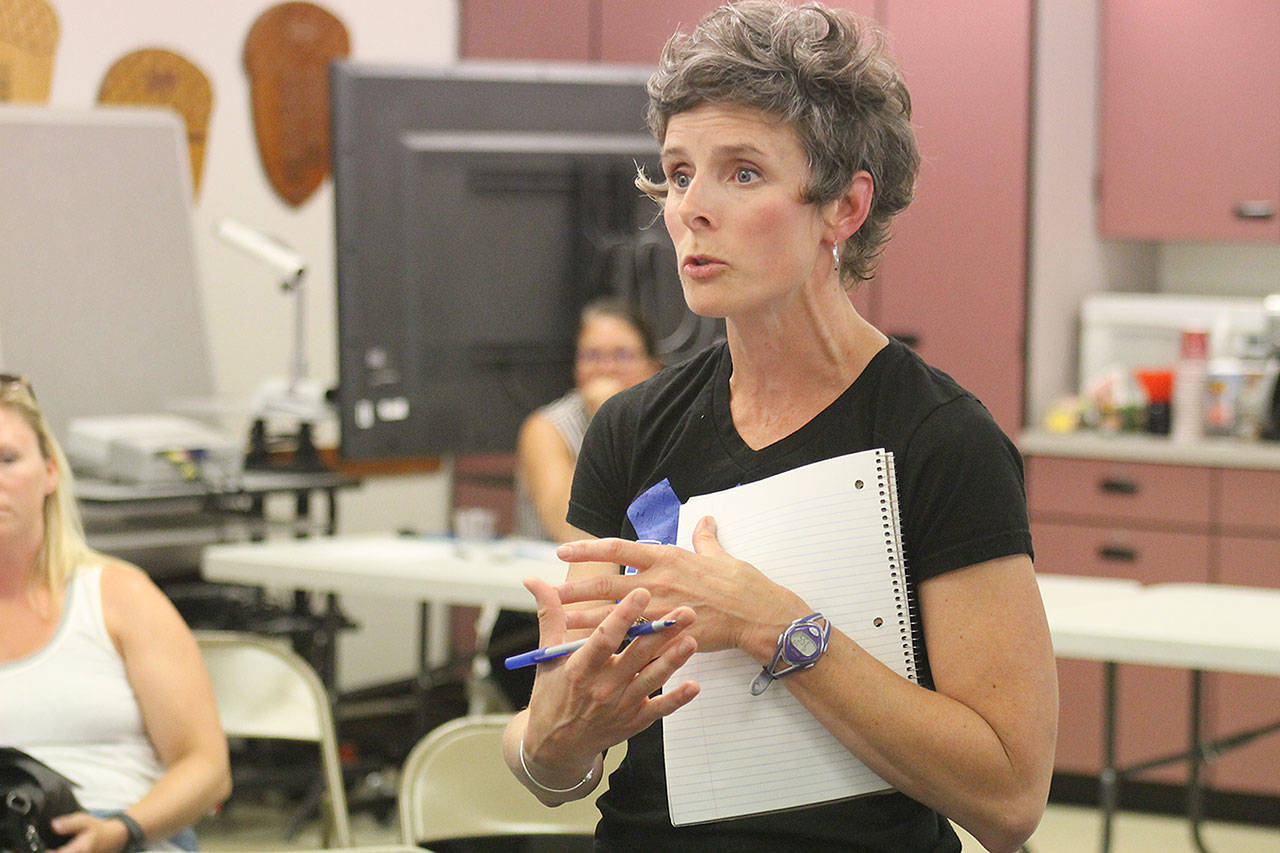The South Whidbey School Board approved a $20.67 million budget for the 2017-18 school year following a public hearing on Wednesday night.
Though major changes to the state education funding model through statewide property tax hikes are coming next year, the 2017-18 budget is mostly “status quo,” according to Assistant Superintendent of Business Dan Poolman. Poolman gave details of the budget at Wednesday night’s meeting and also provided a preview of what to expect in the 2018-19 budget when the major changes are expected to take effect. Though the public hearing was meant for information and feedback purposes, parents felt compelled to express concerns about the unknowns regarding facility consolidation, the grouping of middle school aged students with high schoolers, a lack of medical supervision for middle school and high school sports and the closure of Langley Middle School.
Erin Simms, a parent, said that information provided by the South Whidbey School District to parents or teachers about the “new situation” has been “limited.”
“I feel like that middle school program has been very much interrupted and I know the teachers have concerns,” Simms said. “It sounds like they’re not being completely addressed.”
Simms also asked if the new education funding system frees up enough of the school district’s budget to keep the middle school open.
Board and district officials reiterated at the meeting and in follow-up interviews that reopening the middle school is not viable at this time due to shrinking enrollment, which nets fewer monies from the state under the current funding mechanism, and less of a need for four school facilities. District officials noted attendees’ questions and will answer them at the next school board meeting.
“I appreciate them expressing their concerns,” Board Chairwoman Linda Racicot said. “…It’s been a trying time. Obviously people are still concerned. But, I feel the district is really in a good space and moving forward with great changes.”
The 2017-18 budget’s general fund is $17.7 million, up by about $1 million from last year due to increases in teacher salaries and benefits. Other funds budgeted include capital projects ($2.5 million), debt service ($85,200), associated student body ($211,250) and transportation vehicles ($162,000).
Revenue for the 2017-18 year is expected to be $17.57 million, which means the district will have to draw $192,220 from its $1.8 million fund balance to compensate for the discrepancy between expenditures and revenues.
Personnel costs totaling about $15 million make up 85 percent of the budget, while cost of living adjustments and increases in retirement rates, K-3 class size funding, health care and highly capable funding will also pile on additional costs.
The statewide property tax increase of 80 cents to $2.70 per $1,000 of assessed value starting in 2018 are meant to satisfy a 2012 state Supreme Court ruling that the state was underfunding public schools. School districts have previously paid for salaries and other expensive aspects of school budgets through local maintenance and operations levies and received additional funding from the state based on enrollment figures.
Enrollment in the South Whidbey School District has steadily declined over the past decade and is expected to drop by another 23.5 students this fall. The rate per full-time student in basic education is $7,249.24 and $7,246.68 for special education.
The new funding mechanism eliminates the need for districts to rely on maintenance and operations levies, but local “enrichment” levies beginning in 2019 will cover expenses not included in the state levy, such as athletics or other additional programming. The definition of “enrichment” is still being determined by the state, Poolman said, and the things that the levy could fund is still being determined.
While a few of the half-dozen people in attendance asked questions pertaining to the 2017-18 budget, much of the comment period was geared toward the unkowns of the upcoming school year and the repercussions of the board’s decision in January to close the middle school.
In a follow-up interview on Thursday afternoon, Poolman said the monies to be allocated from the state next year are predominately for salaries and benefits.
“The current budget is allocated,” Poolman said. “In order to do something different, we would have to change our priorities and reduce staffing. It really comes down to the board’s decision. It’s really not a financial decision.”
Poolman said closing the middle school kept the district from having to reduce its fund balance lower than $192,000 in accordance to board policy.
“It would draw down the fund balance at a much faster rate than what we’re currently doing,” Poolman said.
The district’s fund balance is essentially a savings account and used when needed. For example, if the state is a month late in its apportionment of funds for teacher salaries, the district has enough money to make payroll.
The district considered closing the primary school, now known as South Whidbey Elementary School South Campus, as an alternative to shuttering the middle school. But, district officials “realized closing the primary school would have no financial effect,” Poolman said.
Superintendent Jo Moccia also expressed doubt that the enrichment levy could be used for anything but amenities “on behalf of students.”



